DROPS Alaska
A wool classic!
from:
3.50CAD
per 1.8 oz
Content: 100% Wool
Yarn Group:
C (16 - 19 stitches)
/ 10 ply / aran / worsted
Weight/yardage: 1.8 oz (50 g) = approx 77 yds (70 m)
Recommended needle size: US 8 / 5 mm
Gauge: 4" x 4" / 10 x 10 cm = 17 sts x 22 rows
Care: Hand Wash, cold max 30°C / 86F. Dry Flat / Feltable
Superwash: no
Made in: EU
Raw material origin: Wool from South America
This yarn has an Oeko-Tex® certification (certificate number 25.3.0099), Standard 100, Class I from the INNOVATEXT TEXTILE ENGINEERING AND TESTING, HUNGARY. This means that is has been tested for harmful substances and is considered safe in human-ecological terms. Class I is the highest level, and it means the yarn is suitable for baby articles (ages 0-3).
A classic spun, untreated yarn, in 100% new wool. Untreated wool means that the fibers are only washed, and not exposed to any chemical treatment prior to the dyeing. This enhances the wool's best qualities, while it also provides a better shape and texture quality.
DROPS Alaska is a triple stranded proven quality yarn, one of the classics of the DROPS collection, as popular today as when launched in the mid 80's. This quality offers a wide range of colors and a great number of patterns for women, men, children and accessories.
Read more about our products' sustainability here
Please be aware that the colours shown may vary from screen to screen in the same way that shades may vary slightly from dye lot to dye lot.
How do I care for this yarn?

Hand Wash, cold max 30°C / 86F. Dry Flat
First of all, consider just airing the garment, instead of washing it. If you still desire to wash it, here are some guidelines:
- Hand wash at 30ºC - separately - with wool detergent without enzymes or optical brighteners.
- Don’t let the garment soak. Move the garment gently back and forth, do not rub or squeeze it.
- Rinse the garment until the rinse water is completely clear, making sure the water temperature stays uniform.
- Do a light centrifugation of the garment (about 800rpm), choosing a program that DOES NOT take in water at the start. Or press carefully the water out of the garment with a dry towel. The garment shouldn’t be twisted or rolled.
- To dry the garment, shape it and lay it flat - do not hang - ideally on a warm bathroom floor or on top of a drying rack in a room with good air circulation. Never dry the garment in direct sunlight.
- Don’t tumble dry.
- Never iron the garment directly. Use always a damp cloth between your steaming iron or regular iron and the garment.
Note: If you are washing a project made with this yarn combined with another, the general guideline is to follow the washing instructions for the most delicate of the yarns you are working with.
Thinking about felting this yarn?
See how this yarn looks before and after felting:
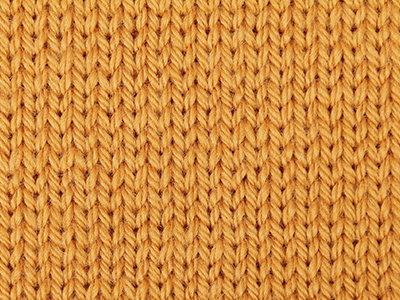
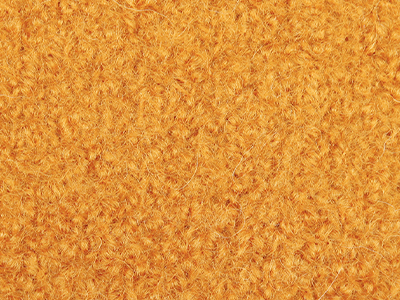
Needles: 5.50 mm
Before: 16 sts x 21 rows
After: 21 sts x 26 rows
Do you have a question about this yarn?
See a list of frequently asked questions (FAQ) about our yarns.
1) What type of fibers make the DROPS yarns?
Yarn can be made from a large number of natural and synthetic fibers. DROPS carries mainly yarns made from wool, cotton, alpaca, linen, mohair and silk. Each fiber type has its own qualities, and they are often mixed to take advantage of the best properties of each one. Coarse yarn has the advantage of being stronger and more durable, and finer fibers offers more softness and comfort. Here a bit about the main fibers we carry:
Alpaca:
Alpaca fleece is the natural fiber harvested from an alpaca, and it is similar in structure to sheep wool fiber. Its softness comes from the small diameter of the fiber, similar to merino wool. It is a soft, durable, luxurious and silky natural fiber. Yarn made from alpaca fibers does not felt or pill easily, and it can be light or heavy in weight, depending on how it is spun. While similar to sheep’s wool, it is warmer, not prickly, and has no lanolin, which makes it hypoallergenic. Alpacas come in 22 natural colors, with more than 300 shades from a true-blue black through browns-black, browns, white, silver and rose-greys.
Mohair:
This fiber comes from the Angora goats, and its considered a luxury fiber. Mohair yarn is warm as wool, but much lighter in weight; it is durable, dyes well and does not felt easily. Mohair fibers have also a distinctive luster created by the way they reflect light. Despite being a hard fiber, mohair is usually spun into a very fluffy yarn, resulting in airy and lustrous garments.
Wool:
The wool fibers comes from the skin of sheep and are relatively coarse fibers. Two striking characteristics of wool are its susceptibility to heat and its felting property, which is caused by the scales on the surface. Depending upon the breed of sheep, the appearance of the wool varies.
Wool from Merino sheep is considered the finest type of wool, having as characteristics that is finely crimped and soft. All the Merino wool in the DROPS yarns has its origins in South America, coming from sheep that have not been subject to Mulesing.
Pure new wool is wool made directly from animal fleece, and not recycled from existing wool garments.
Machine washable wool is wool treated chemically to minimize the outer fuzzy layer of the fibers, and be therefore fitable for machine wash (see Superwash).
Silk:
The silk fiber is a fine continuous fiber produced from the cocoon of a moth caterpillar known as the silkworm. While silkworm is cultivated, the wild or tussah silk is obtained from uncultivated silkworm cocoons. Silk fiber is one of the strongest natural fibers and makes a wonderful knitting yarn. It blends really well with other fibers, especially wool. Silk also dyes beautifully with natural dyes.
Vegetable fibers:
There are several varieties of vegetable fibers, found in the cell walls of plants or vegetables. Of all the varieties, two are recognized as major knitted or textile fibers. They are cotton and linen.
Cotton is the fiber surrounding the seeds in a cotton pod, and it is almost pure cellulose. Cotton is usually white in color but there are green and brown varieties as well. The cotton fiber is most often spun into yarn or thread and used to make a soft, breathable textile that is good for summer clothing and accessories, making a weaker yarn than silk or linen but stronger than wool.
Mercerized cotton is cotton that has been through a mercerization treatment. This treatment gives cotton fabrics and threads a lustrous yarn that is more lustrous than conventional cotton. It is also stronger, takes dye a little more readily, makes the yarn more resistant to mildew and reduces lint. It also may not shrink or lose its shape as much as "regular" cotton.
Linen is a fiber derived from the stalk of the flax plant that is durable and stronger than any other fiber. The linen fiber is relatively soft, straight and lustrous and becomes more beautiful with age. Linen is more comfortable to wear in hot temperatures than cotton, due to the fact that it absorbs moisture better and dries more quickly.
Other materials used in our yarns include synthetic fibers such as acrylic, viscose, polyamide (nylon) and polyester.
3) What type of information can I find on the DROPS yarn labels?
All DROPS yarn labels include information about fiber content (wool, cotton, etc.), weight in grams and ounces, length in meters and yards, washing instructions and symbols (explained here), color number, dye lot number and yarn group information.
4) What are the DROPS yarn groups?
All DROPS yarns are classified into 6 different thickness groups (A to F). Yarns in a same group have similar knitting tension/gauge, and can therefore be interchanged in patterns; however the length may be different, so when substituting always calculate the amount of meters/yards needed for the pattern to know the amount of yarn you need to get.
5) Can I use a different yarn than the one mentioned in the pattern?
Yes, as long as the yarn can be worked in the same knitting tension/gauge. Always swatch to make sure you get the same number of stitches in width and rows in height as given in the pattern.
Remember that different yarns with different textures, will give the garment different looks. The yardage/length may also be different, so when substituting always calculate the number of yards needed, in order to know the amount of yarn you need.
Read more about how to calculate the amount of an alternative yarn - and how to replace 1 thread of a yarn with 2 or more of another, here.
6) What does it mean when a yarn is “Superwash”?
A superwash wool is a special wool product that has been treated or processed in a way that allows it to be machine washable. Many people are afraid to work with wool because it is so easy to shrink (though some shrink wool on purpose) and superwash wool can allow them to work with great fibers without worry. (Read more here).
7) What does “Oeko-Tex® certified” means?
The Oeko-Tex® Standard 100 was introduced at the beginning of the 1990s as a response to the needs of the general public for textiles which posed no risk to health. The Oeko-Tex® Standard 100 is a globally uniform testing and certification system for textile raw materials, intermediate and end products at all stages of production. The test for harmful substances comprise substances which are prohibited or regulated by law, chemicals which are known to be harmful to health, and parameters which are included as a precautionary measure to safeguard health.
For more info go to www.oeko-tex.com
10) How accurate are the colours on the shade cards online?
When obtaining images for the shade card, we do our best to achieve the highest level of color accuracy. Unfortunately, we cannot guarantee how images will appear on your computer screen. Every monitor displays color differently, some colors might look darker than they really are, and some colors might be more saturated on some screens. If you experience that many of the yarn colors looks different on your screen than the actual color of the skeins, you can adjust the setting on your monitor.
11) What is a micron? What does super fine / extra fine mean?
The fineness of yarn fibers is measured in microns (thousands of millimeters). Super fine alpaca wool is 26-28 microns. Fine merino wool is less than 21.5 microns and extra fine merino is under 19.5 microns. The less microns the softer and more delicate a quality can be, the more microns the more hard wear the quality will be.
12) Why are the colors in my skeins of print yarn different?
The reason why two skeins of a same print yarn look different can be 1) that both skeins are part of different dye lots; 2) that the skeins have been dyed using a technique called "magic print" (the one used for example in DROPS Delight), which provides unique patterns and smooth color transitions to each skein, meaning also that within one dye lot, lighter or darker varieties might appear. This is no fault or defect, but part of the yarn's character.
13) My store doesn’t have the color I want, what can I do?
If your DROPS store doesn’t have the yarn color you want, try contacting a DROPS Super Store (the ones with the golden badges) - they will make sure to get a hold of the color even if they don’t have it in stock themselves. See a list of all DROPS stores here.
14) Where can I find a specific dye lot of a color?
Always try contacting your DROPS store first. If they do not have the dye lot you want we recommend you to ask other knitters and crocheters in the DROPS Workshop in Facebook or Ravelry, which may have the dye lot in their stash and might be willing to part from it.
Yarn sheds because there's not enough twist to hold all of the fibers together. All yarns have excess fibers (from production) that might come off as lint or shedding, in varied degrees that depend on how the yarn is spun. Brushed yarns ("hairier" yarns) like DROPS Melody, have more of these loose fibers than other yarns, and therefore shed more. Shedding also depends on what is worn under or over the garment, and whether this pulls at the yarn fibers. It’s therefore not possible to guarantee that there will be no shedding.
Below are some tips on how to get the best result when working with hairier yarns:
- When the garment is finished (before you wash it) shake it vigorously so the looser hairs come off. NOTE: do NOT use a lint roller, brush or any method that pulls at the yarn.
- Place the garment in a plastic bag and put it in your freezer - the temperature will cause the fibers to become less attached to each other, and excess fibers will come off easier. Leave in the freezer for a few hours before taking it out and shaking it again.
- Wash the garment according to the instructions on the yarn label. Garments worked with hairier yarns usually need to be shaken once dry after washing, so that the hairs rise and any excess fibers can come off.
Pilling is a natural process that happens to even the most exclusive of fibers. It's a natural sign of wear and tear that is hard to avoid, and that is most visible in high friction areas of your garment like a sweater's arms and cuffs.
You can make your garment look as new by removing the pilling, using a fabric comb or a pill/lint remover.
How can I replace this yarn?
If you are looking to replace this yarn with another DROPS yarn, you can use another yarn within the same yarn group, or try our yarn converter!
Other yarns in Yarn Group C
Read more about replacing yarn.Have a problem with the DROPS yarn you purchased?
When you purchase yarn from the shade cards or patterns on our site, you are not buying directly from DROPS but from one of the hundreds of DROPS stores around the world. It is therefore important that you take contact with the DROPS store where you bought the yarn, and that you save the labels of all the skeins you purchased (they are your warranty).
The DROPS store you contact will assist you and escalate the claim if necessary. Find a list of DROPS stores here.
Comments / Questions (171)
![]() Ingrid Bäckström wrote:
Ingrid Bäckström wrote:
Hej Är det några av Alaska-garnerna som är ofärgade, dvs. bara ullets naturliga färg? Mvh Ingrid
09.08.2016 - 12:53DROPS Design answered:
Hej Ingrid. Nej, det er der ikke.
22.08.2016 kl. 13:33
![]() Linda Eg wrote:
Linda Eg wrote:
Er det muligt i har regnet på hvor langt et nøgle ca. rækker? Tænker bare ved alm retstrik og på pind 5?
16.07.2016 - 09:59DROPS Design answered:
Hej Linda. Nej, det har vi ikke noget regnestykke paa.
18.07.2016 kl. 11:25
![]() Nicole wrote:
Nicole wrote:
Hallo, ich habe eine grundsätzliche Frage zu den Drops-Garnen. Sind die Garne mottensicher ausgerüstet? Bei manchen ist extra vermerkt, dass sie nicht chemisch behandelt wurden.
21.06.2016 - 10:59DROPS Design answered:
Hallo Nicole, alle unsere Garne verlassen garaniert mottenfrei unser Lager, für den späteren Mottenschutz sind bei den unbehandelten Garnen die Händler und dann die Kunden verantwortlich.
06.07.2016 kl. 12:08
![]() Simona Martino wrote:
Simona Martino wrote:
Buongiorno, Sto lavorando il cold spring, mi sembra piuttosto rigido come filato, una volta lavato recupererà morbidezza?
11.05.2016 - 16:09DROPS Design answered:
Buongiorno Simona. Lavorando seguendo il campione indicato, il risultato non dovrebbe essere rigido. Può eventualmente anche lavare il suo campione per verificare che la morbidezza del lavoro sia di suo gradimento. Buon lavoro!
11.05.2016 kl. 16:15
![]() Cordelia wrote:
Cordelia wrote:
Bonjour, J'aurais voulu savoir si le coloris "naturel" était une nuance non teinte. La nuance du mouton en somme. Quelle que soit la qualité de la laine d'ailleurs. Merci !
13.03.2016 - 11:49DROPS Design answered:
Bonjour Cordelia, la plupart de nos couleurs "naturelles" sont teintes - avec (comme c'est le cas pour Alaska) ou sans certification Oeko-Tex (cf description du fil sous chaque nuancier) - pour des couleurs naturelles, non teintes, regardez DROPS Puna. Bon tricot!
14.03.2016 kl. 10:48
![]() Elli wrote:
Elli wrote:
Welche Garnalternative ist für das Modell 0-813 die hautfreundlichste (kratzen) und am wenigsten fusselnste?
26.01.2016 - 23:33DROPS Design answered:
Liebe Elli, wenn Sie auf "Alternative Garne" Garngruppe C klicken, werden Ihnen alle Möglichkeiten angezeigt. Big Merino ist sicher die weichste Variante, aber bei einer grossen Herrenjacke ist sicher eine gewisse Gefahr, dass sich das Strickstück ausdehnt. Ich persönlich würde Ihnen Nepal empfehlen.
04.02.2016 kl. 15:53
![]() Lucia wrote:
Lucia wrote:
Poiche' dovro' eseguire un maglione tondo a due colori che mi portera' via tempo e fatica,vorrei sapere se la lana alaska e' morbida e non pungente.grazie
25.01.2016 - 09:58DROPS Design answered:
Buongiorno Lucia. Il filato Alaska è morbido. Se risulta pungente o meno è spesso un fattore soggettivo. Può prendere in considerazione filati alternativi, ma dello stesso spessore dell’alaska come la Nepal, che contiene anche Alpaca, o la Big Merino, che essendo di lana Merino è anch’essa molto morbida e più difficilmente dà problemi a pelli sensibili o sensazione di essere pungente. Buon lavoro!
26.01.2016 kl. 11:55
![]() Sarah Smith wrote:
Sarah Smith wrote:
I am concerned about cruelty towards animals since reading PETA's plea for people to stop knitting or wearing wool because of cruelty to sheep in some parts of the world. I love your yarns and would like to know where you source them from. When it says 'Made in the EU or Peru' for instance, does this mean the yarn comes from there originally or does it mean it has been spun and dyed in that country? Thanks Sarah
19.11.2015 - 19:50
![]() Barbara wrote:
Barbara wrote:
Bonjour, J'hésite pour un pullover entre la qualité Alaska et Nepal. Quelles sont les différences? Nepal contenant de l'alpaca est-elle plus douce? L'une des deux laines est-elle plus robuste? Y a-t-il des différences de texture, comportement au lavage (certaines fibres sont plus susceptibles que d'autres de s'étendre ou perdent en élasticité)... Je note aussi qu'Alaska est certifiée Oeko-Tex, alors que Nepal ne l'est pas. Merci d'avance pour tout conseil!
12.10.2015 - 16:12DROPS Design answered:
Bonjour Barbara, vous trouverez ici et là quelques informations complémentaires sur les fils - votre magasin DROPS saura vous aider à choisir en fonction de ce que vous souhaitez, n'hésitez pas à le contacter par mail ou téléphone. Bon tricot!
13.10.2015 kl. 10:06Claire Powis wrote:
Has anyone tried washing this wool in a washing machine? On a 30 degree wool cycle of course! Will it survive? I don't want to handwash as the blanket I am making will be too big.
28.09.2015 - 21:21
![]() Pernille Larsen wrote:
Pernille Larsen wrote:
Jeg har for et par år siden købt farve 40 gammelrosa. Har stadig garnet liggende og ved ikke hvad jeg skal gøre ved det. Farven er absolut ikke gammelrosa, men lilla. Parti 6572
28.04.2015 - 20:57Susana Lomeli wrote:
Tienen ofertas por el buen fin y que precio tiene.graciad buenad noches
18.11.2014 - 06:05
![]() Gwen Kok wrote:
Gwen Kok wrote:
Ik vroeg mij af waar jullie Merinowol vandaan komt en of de wol diervriendelijk verkregen wordt.
13.10.2014 - 20:03DROPS Design answered:
Hoi Gwen. Kijk je op de kleurenkaarten voor onze merinosgarens (Baby Merino, Merino Extra Fine, Cotton Merino en Big Merino), dan kan je lezen dat de wol voor onze merinosgarens alleen afkomstig is van vrijlopende dieren uit Zuid-Afrika en Zuid-Amerika waar bijvoorbeeld mulesing niet toegestaan is.
28.10.2014 kl. 12:39
![]() Rosemary wrote:
Rosemary wrote:
What weight is this bulk or worsted
10.10.2014 - 05:41DROPS Design answered:
Dear Rosemary, DROPS Alaska is Aran / 10 ply (8 wpi). Happy knitting or crocheting!
13.10.2014 kl. 11:11
![]() Jabba wrote:
Jabba wrote:
Für meine kleine Tochter (fast 3) häkel ich gerade einen Poncho aus dieser Wolle, der an Drops Muster 139-1 angelehnt ist, mit Granny Squares als Kragen und mit bunten Streifen. Die Farben sind super, die Wolle lässt sich sehr leicht verarbeiten und es geht wegen der dicken Nadel auch noch recht schnell voran. Aber eigentlich wusste ich das vorher schon, nach der positiven Erfahrung mit der Mütze habe ich dieses Garn ja extra für meine Kleine ausgewählt :-) Wieder DAUMEN HOCH für Alaska!
25.08.2014 - 11:49
![]() Jutta wrote:
Jutta wrote:
Habe mir eine Tasche nach Anleitung gestrickt und gefilzt. Sieht wirklich super aus. Leider ist das altrosa eher ein flieder und die Wolle fusselt nach dem filzen extrem.
20.08.2014 - 16:53
![]() Annelies wrote:
Annelies wrote:
Heb er 20 bollen van gekocht. Heb een vest gebreid. Kan het al weggooien voor het gewassen is. Pilt en pluist verschrikkelijk. Heel veel spijt ervan.
12.05.2014 - 10:42
![]() Barbora wrote:
Barbora wrote:
Dobrý den, má tato vlna úpravu superwash? Pokud ano, která příze z nabídky Drops tuto úpravu nemá? Děkuji, Barbora
07.04.2014 - 12:26
![]() Doris wrote:
Doris wrote:
Sehr schöne Wolle in tollen Farben. Das Altrosa und das Petrol sind wunderschön. Durch die dicken Nadeln kommt man schnell voran und Muster wirken sehr schön.
14.03.2014 - 17:42
![]() DROPS Design NL wrote:
DROPS Design NL wrote:
Hoi Mirjam. Dat hangt er vanaf hoe gevoelig je bent voor wol. Je kan het beste naar de winkel gaan en de wol voelen - dan weet je of je tegen kan.
06.03.2014 - 10:08
![]() Jabba wrote:
Jabba wrote:
Ich habe mir aus dieser Wolle eine Mütze nach einer "myBoshi"-Anleitung gehäkelt und sie ist echt schön geworden. Die Wolle fühlt sich sehr angenehm an, lässt sich gut verarbeiten und die Muster kommen sehr schön raus. Eine super Alternative zur MyBoshi-Wolle, die auch mehr kostet. Klare Empfehlung, Daumen hoch!
18.02.2014 - 11:05
![]() Anteide wrote:
Anteide wrote:
Schöne Wolle und billig. Lässt sich wunderschön stricken, sehr angenehm. nd ja, Nathalis, kratzt ein ganz kleines bisschen, ist aber wirklich Nebensache. Fluselt leider.
15.02.2014 - 20:04
![]() Mirjam wrote:
Mirjam wrote:
Is deze Alaska wol echt zacht of lijkt deze wol meer op 100% schuurwol.?Schuurwol kan ik namelijk niet verdragen.
02.02.2014 - 21:42
![]() Irene wrote:
Irene wrote:
Im gestrickten Zustand sehr schoen, nach der Handwaesche wird es leider um Einiges groesser. Wuerde dieses Garn nicht mehr verstricken
13.01.2014 - 11:21DROPS Design answered:
Liebe Irene, es ist ganz wichtig, dass Sie das Kleidungsstück liegend trocknen, wie in unserer Pflegeanleitung angegeben, dann behält es sehr schön die Form.
22.01.2014 kl. 08:38






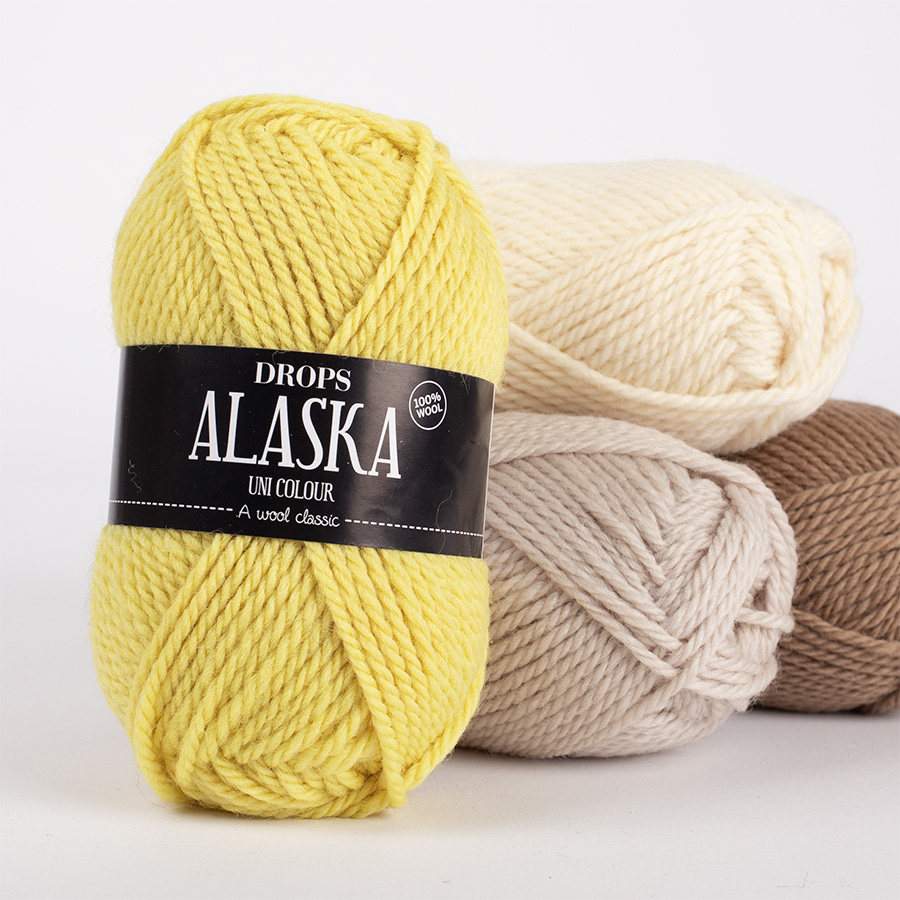
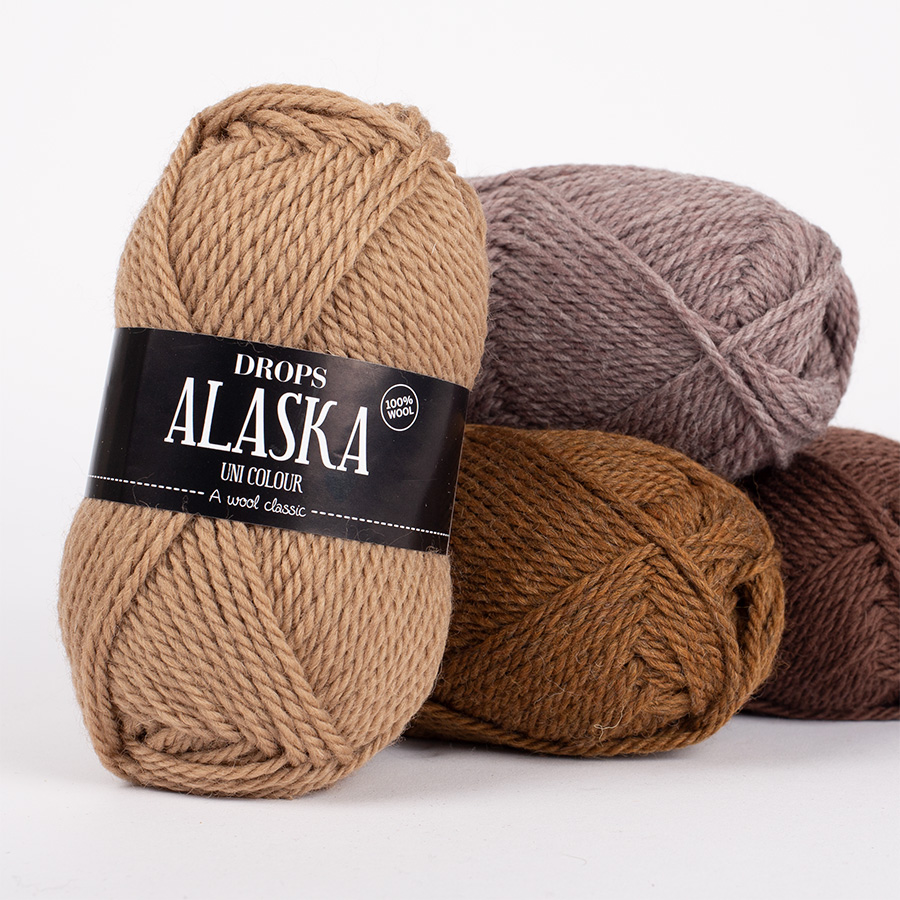
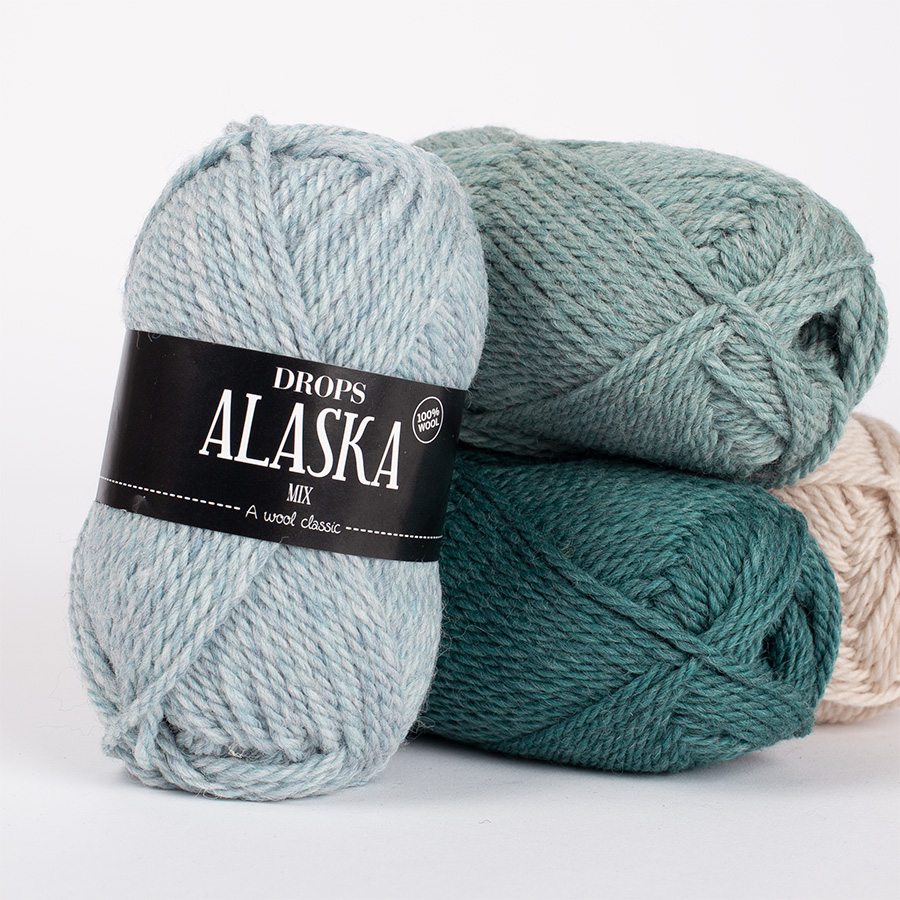
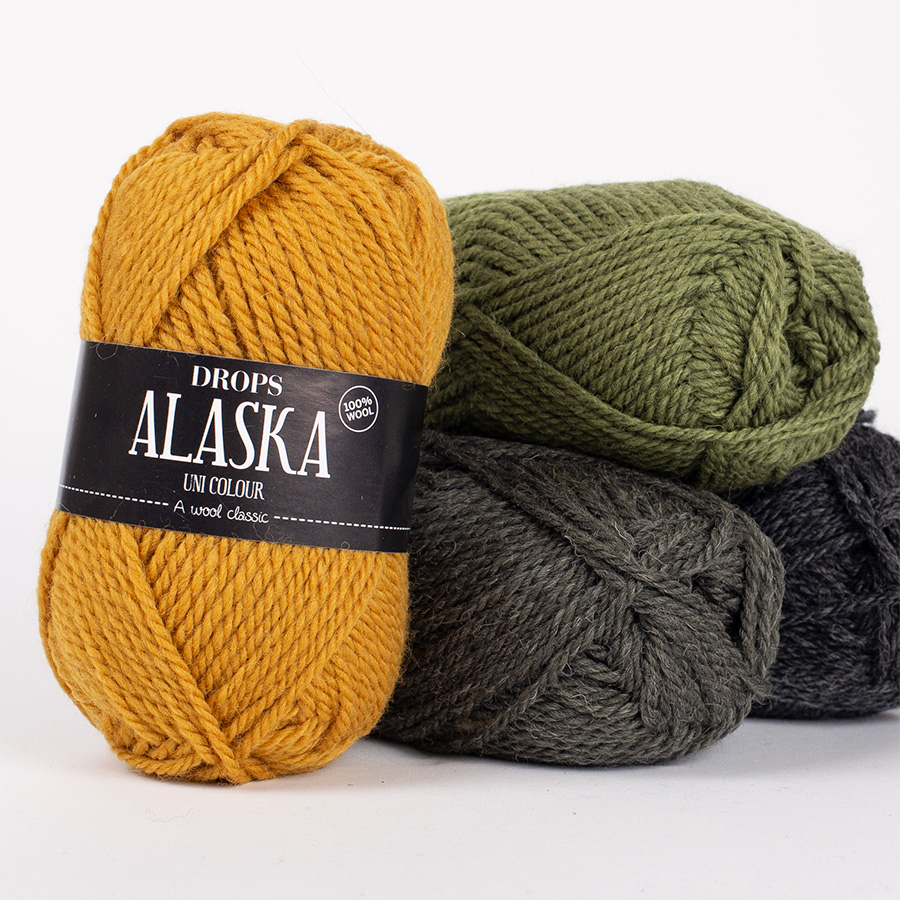
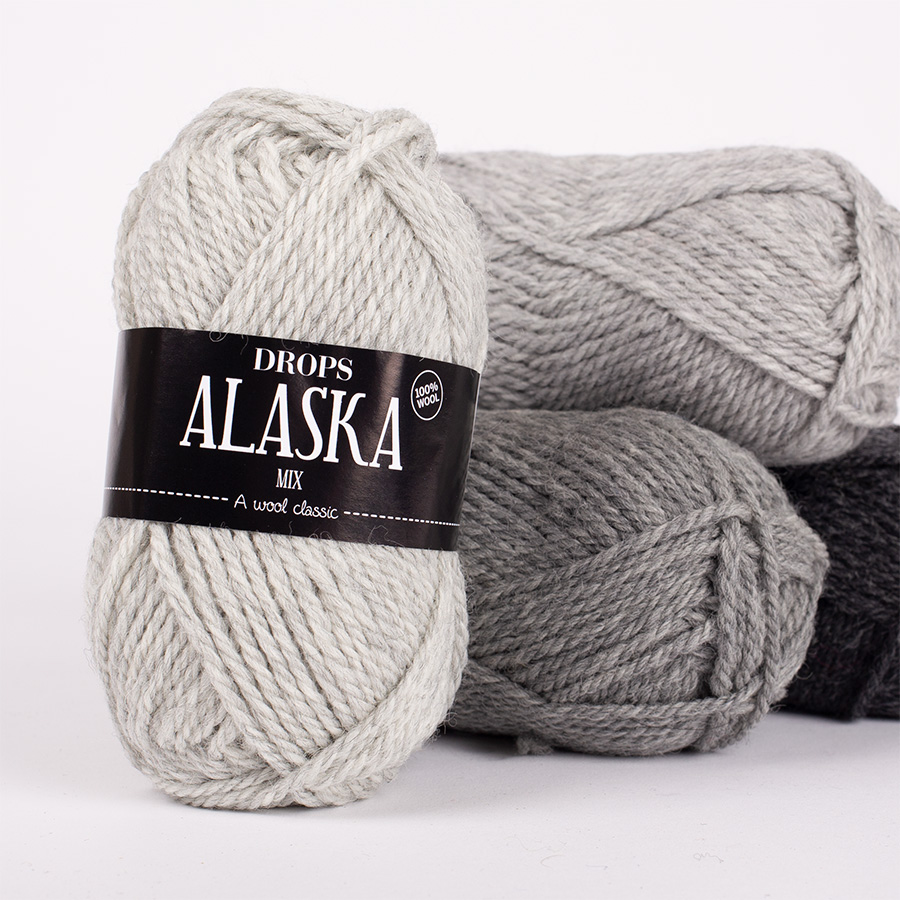
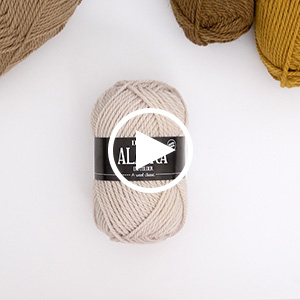









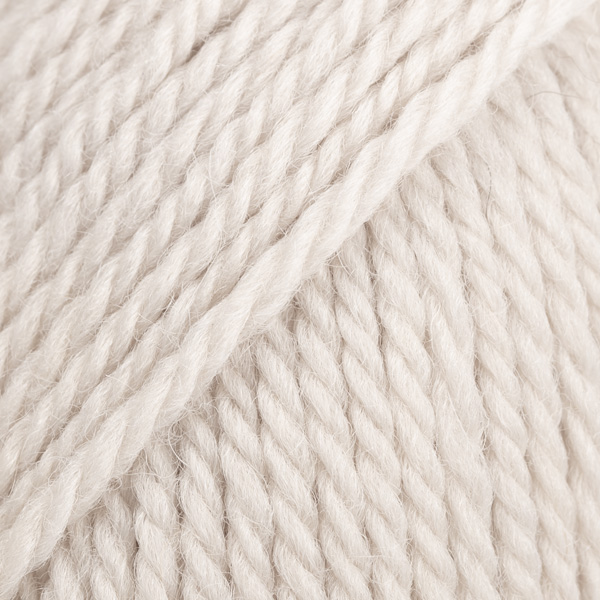

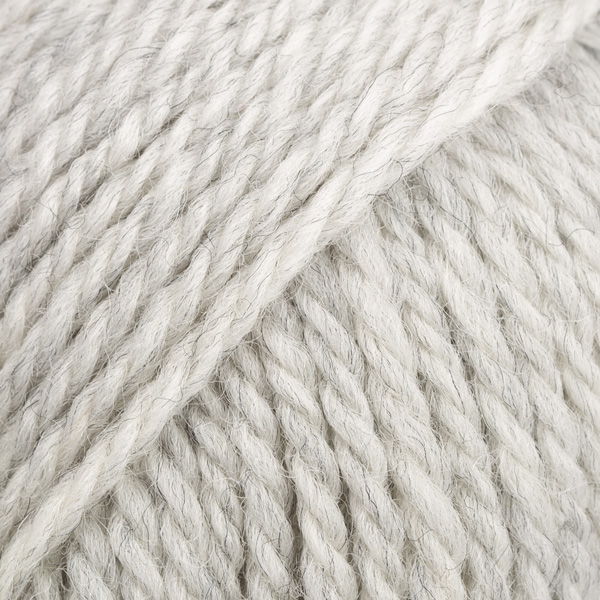

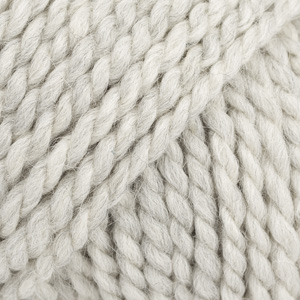












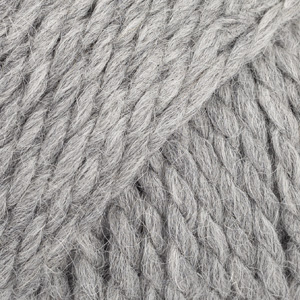

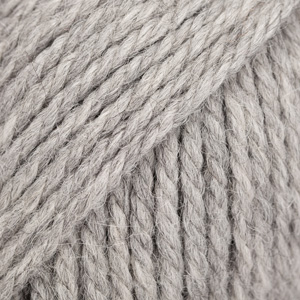











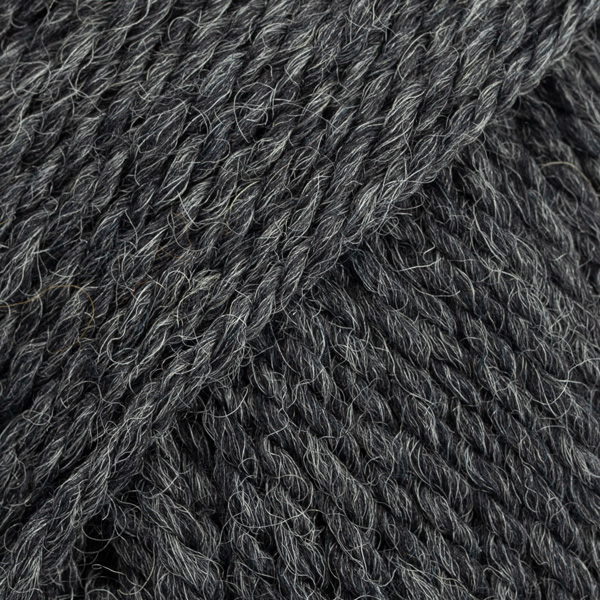
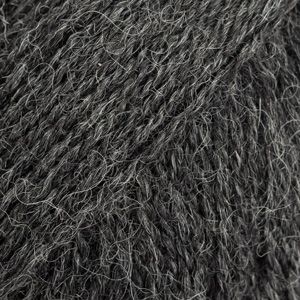





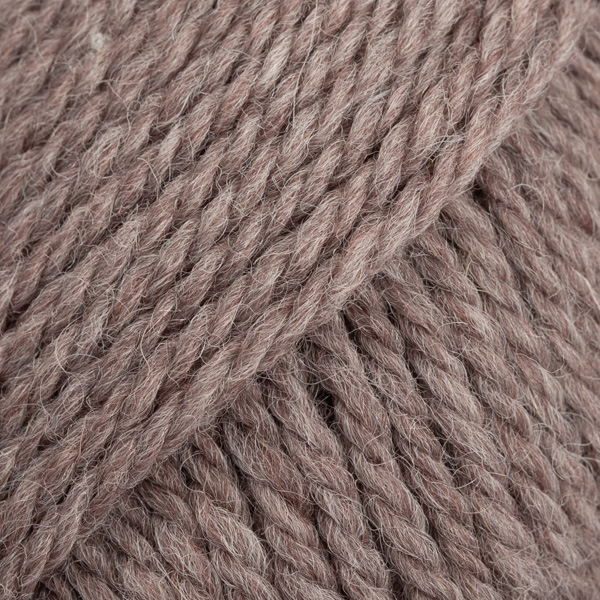



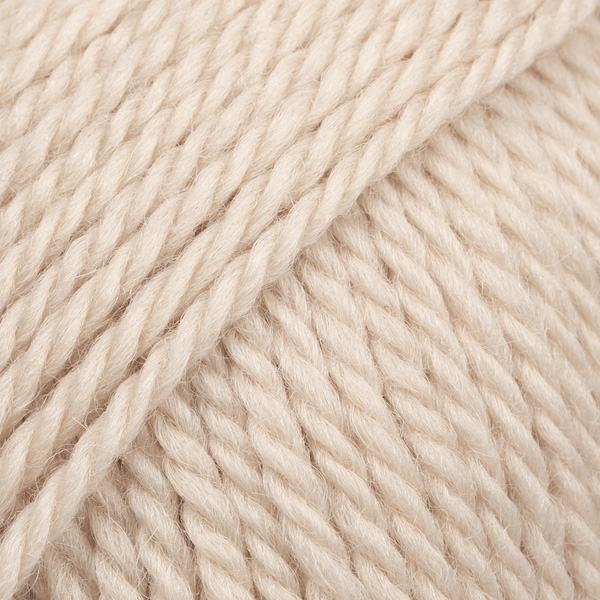


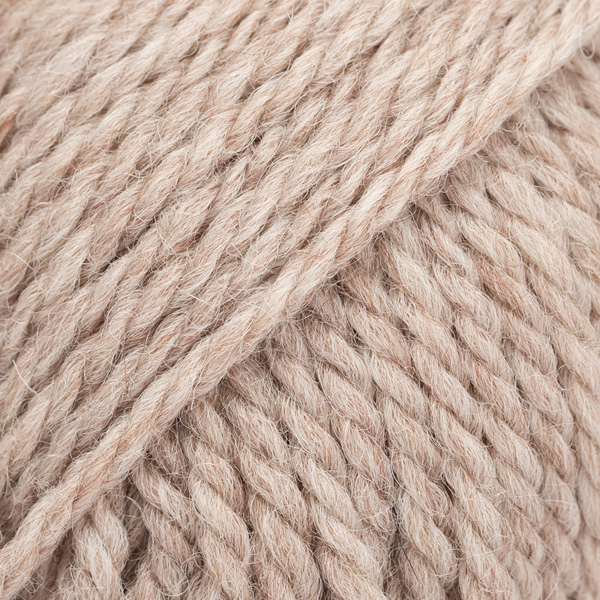

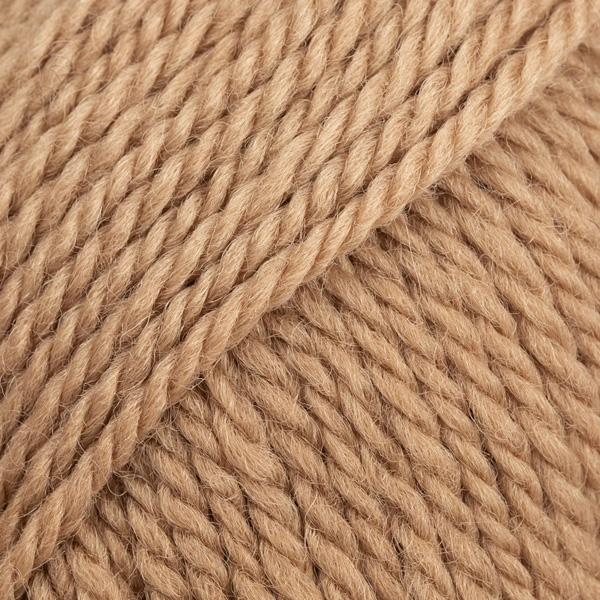

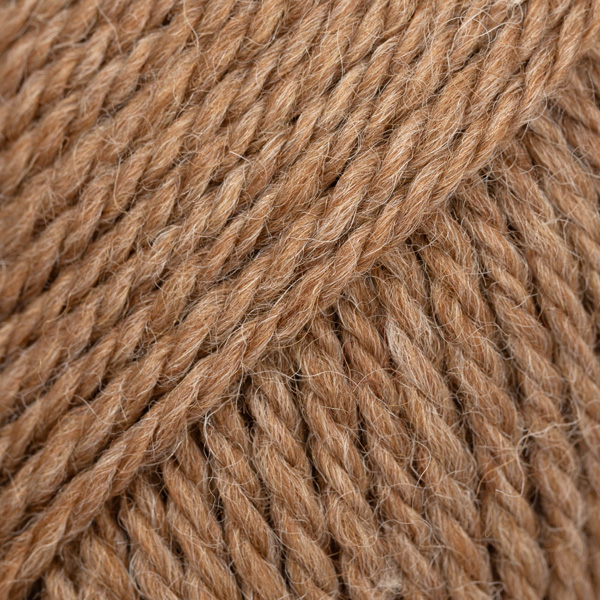
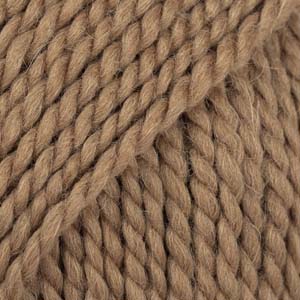




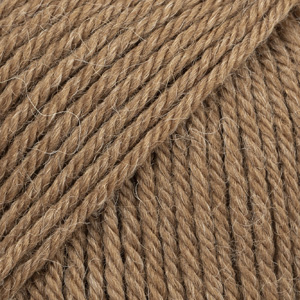




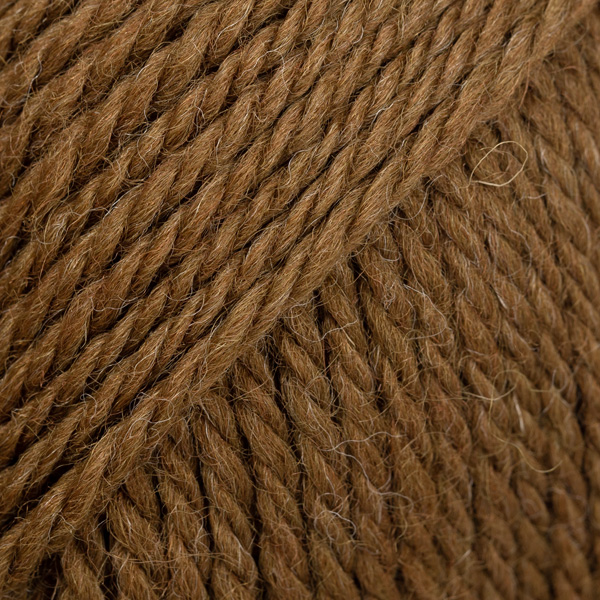


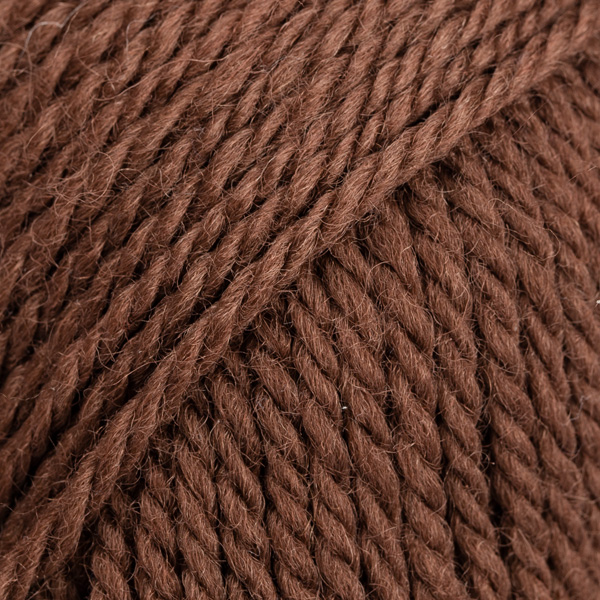

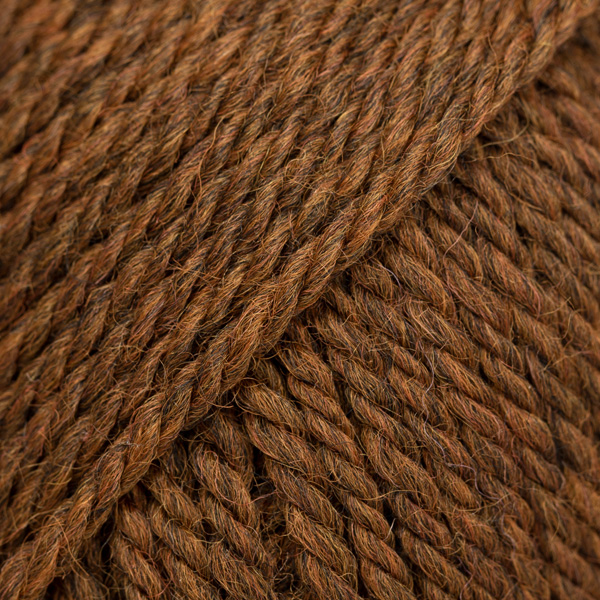

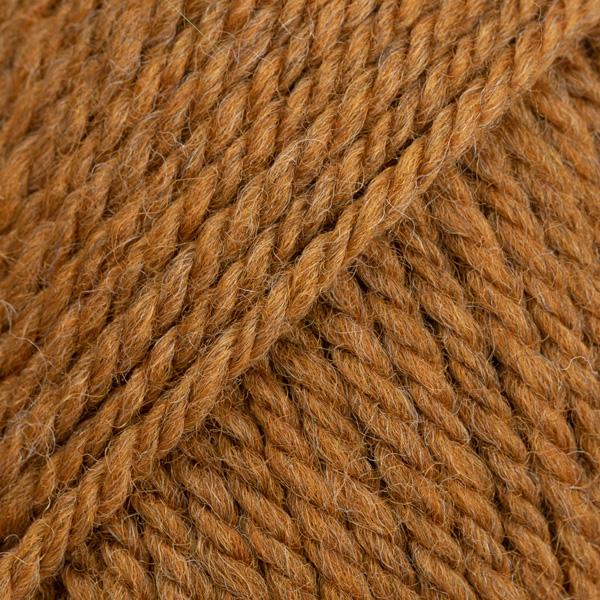


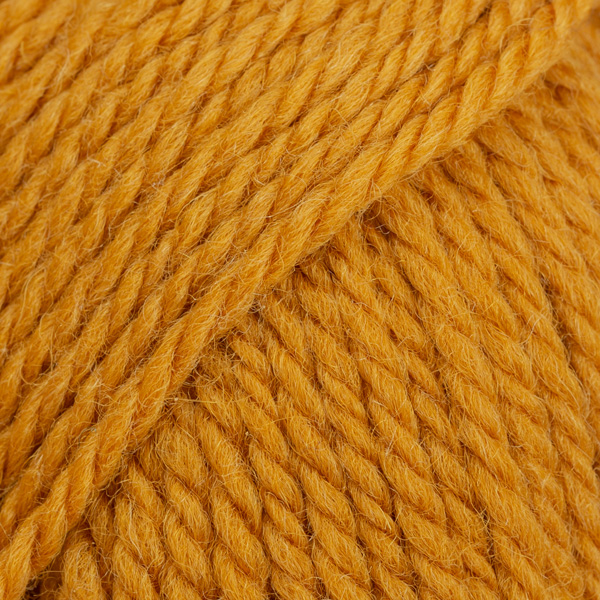






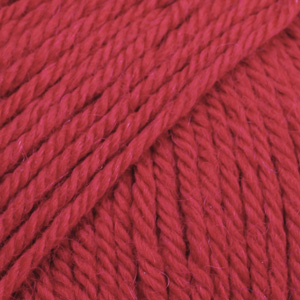








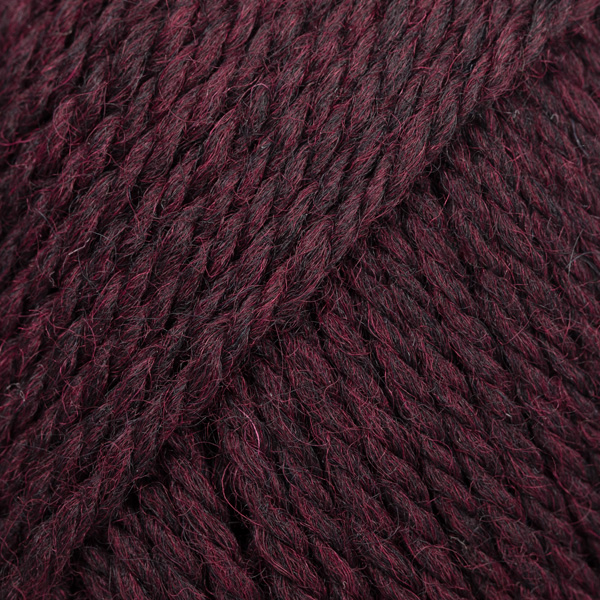


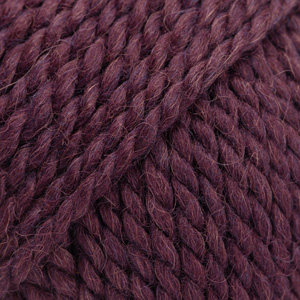





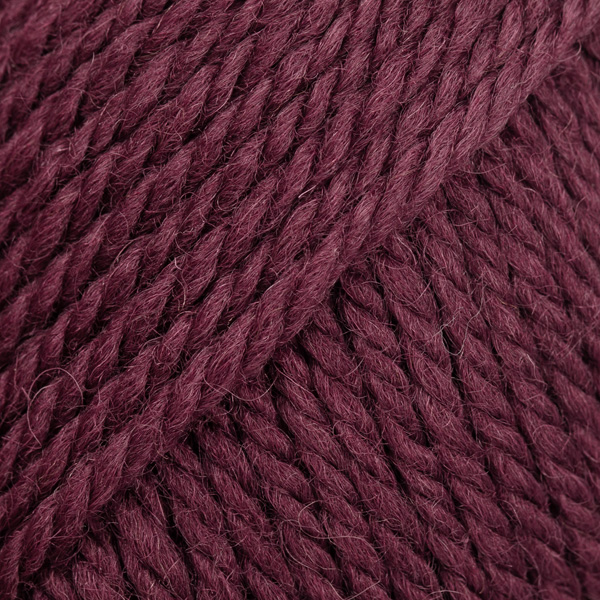



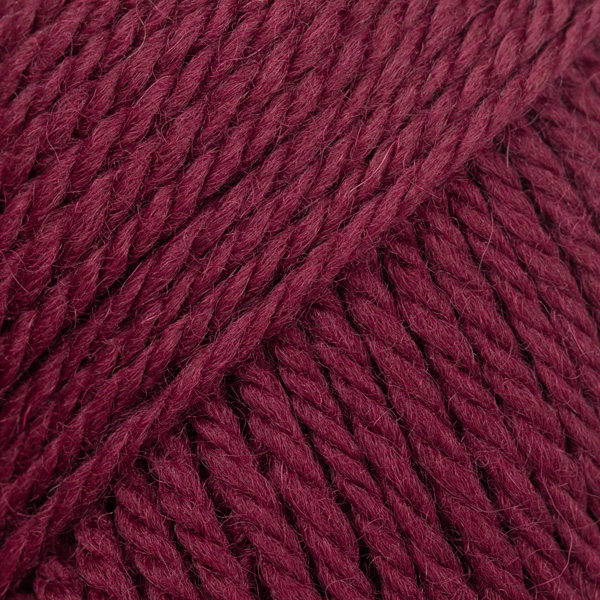







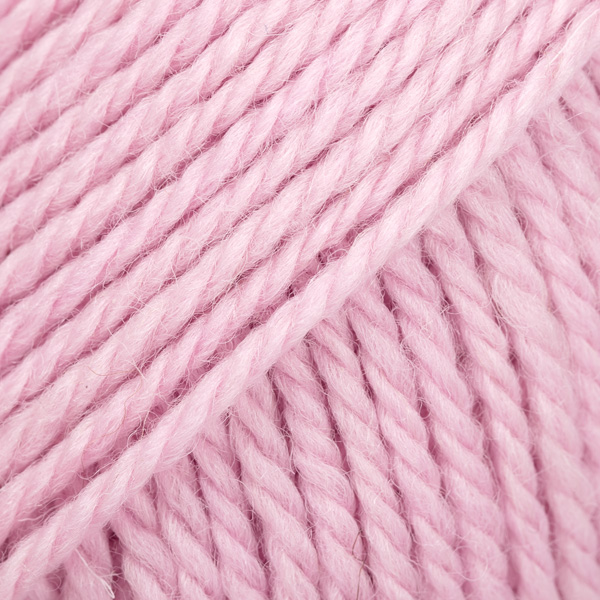

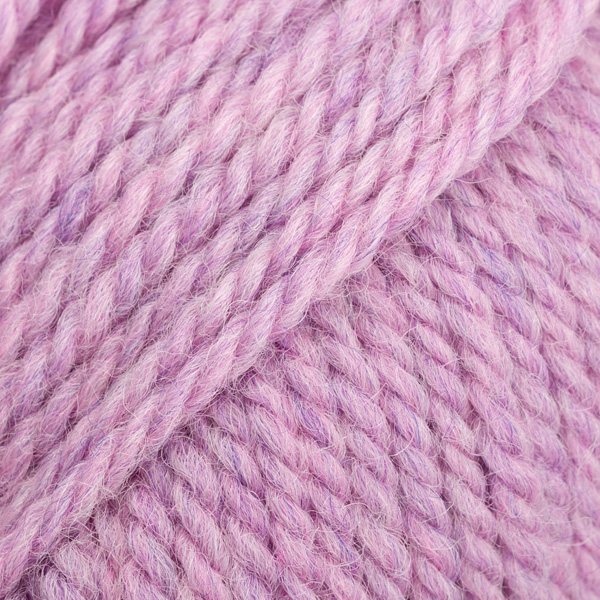

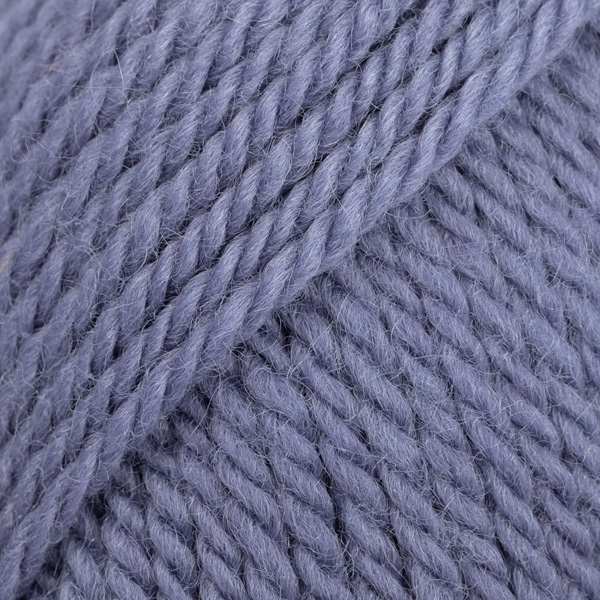

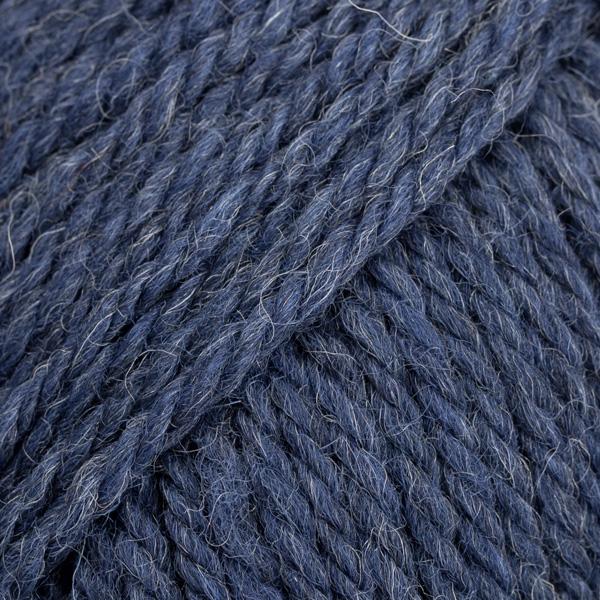






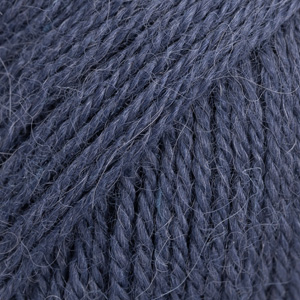





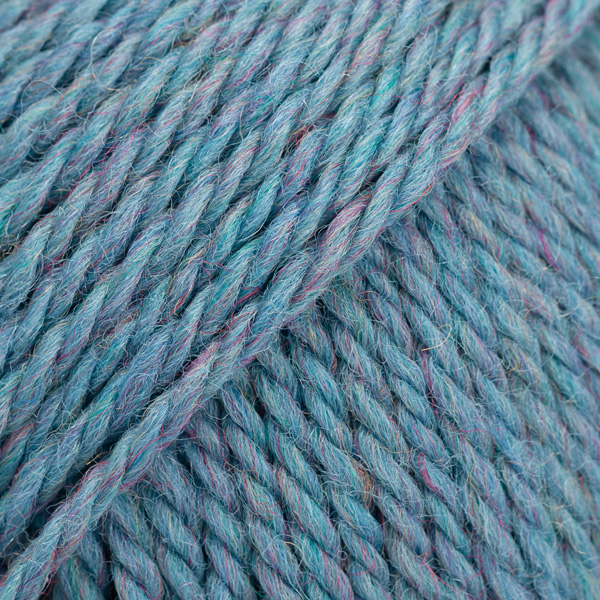

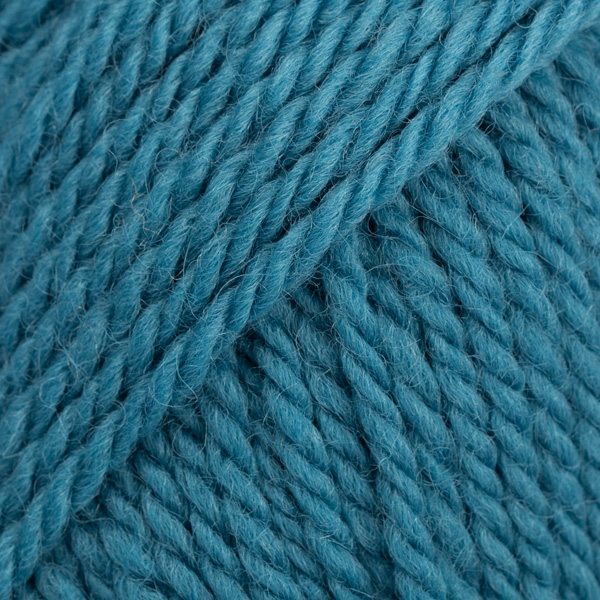





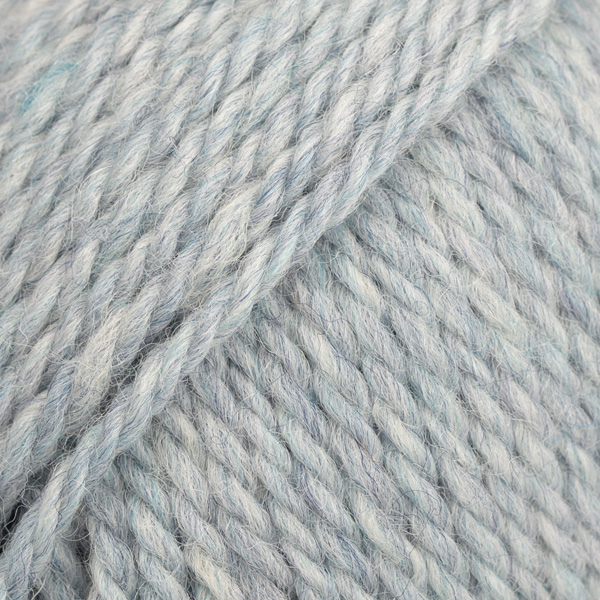
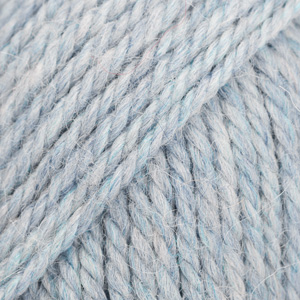

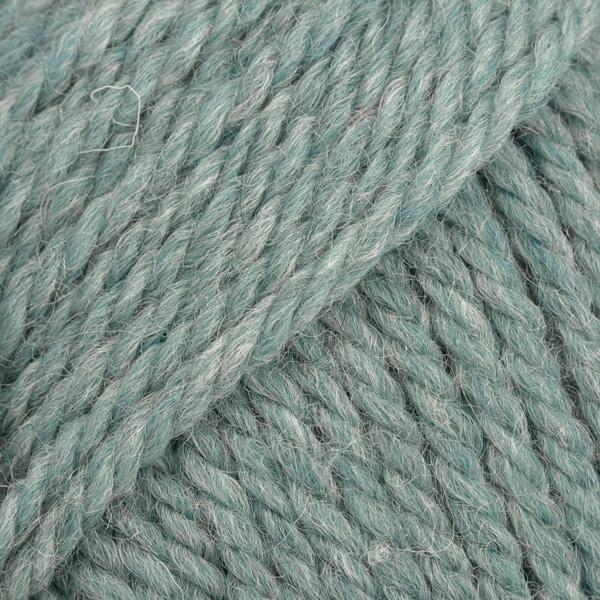

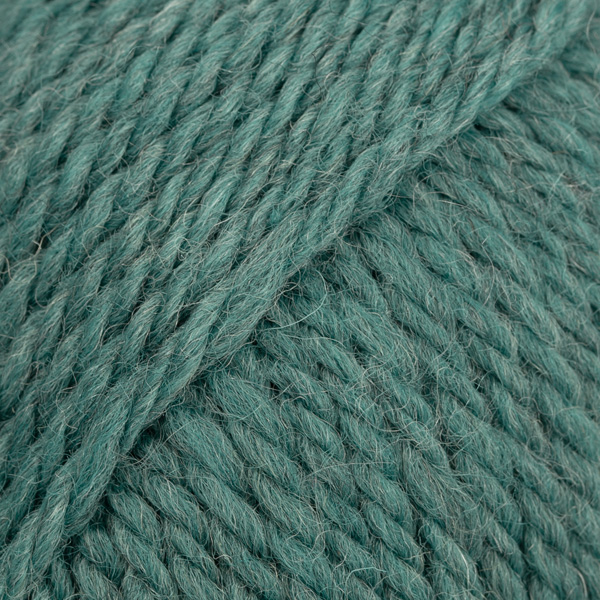




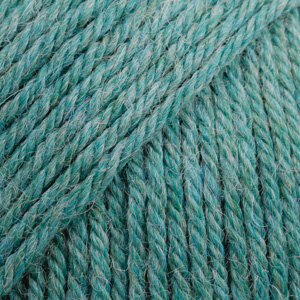




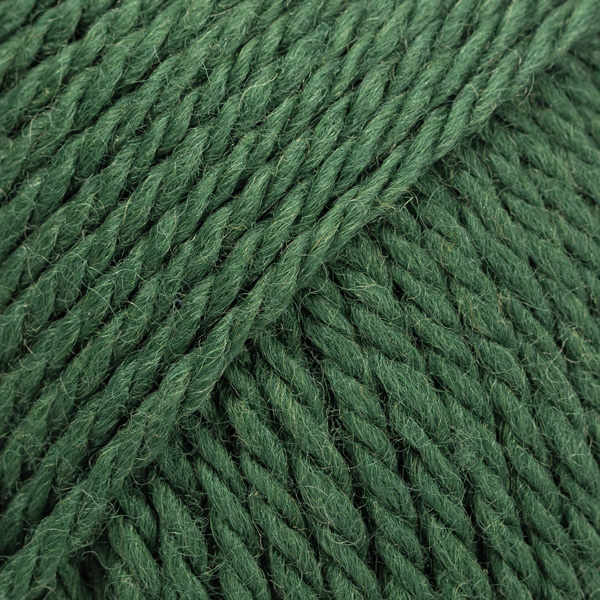

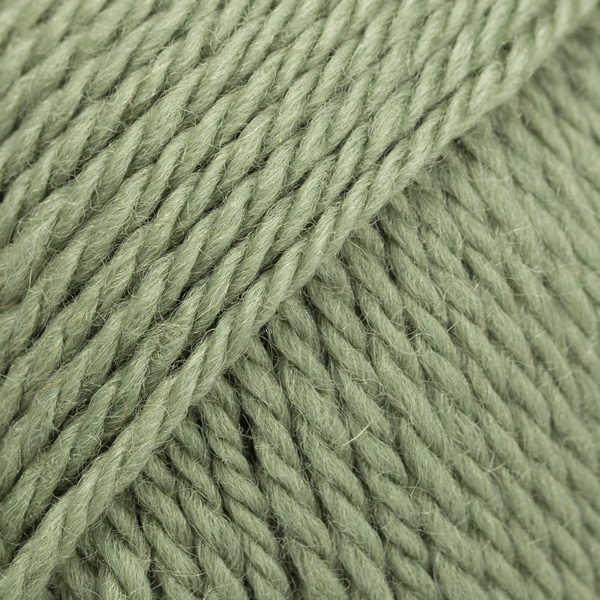

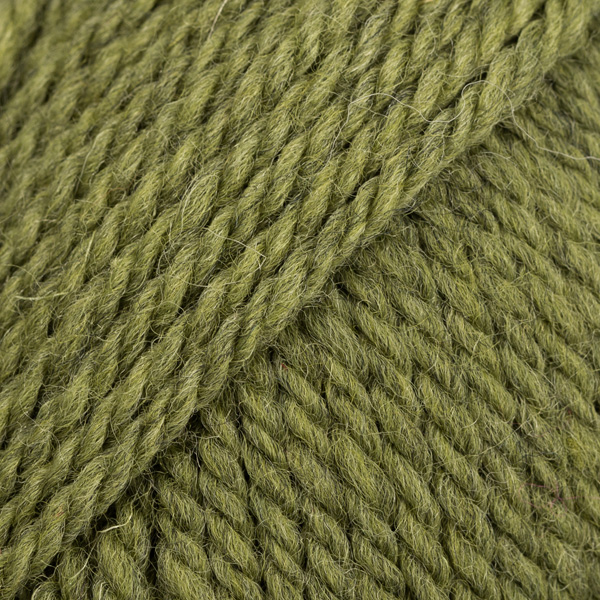






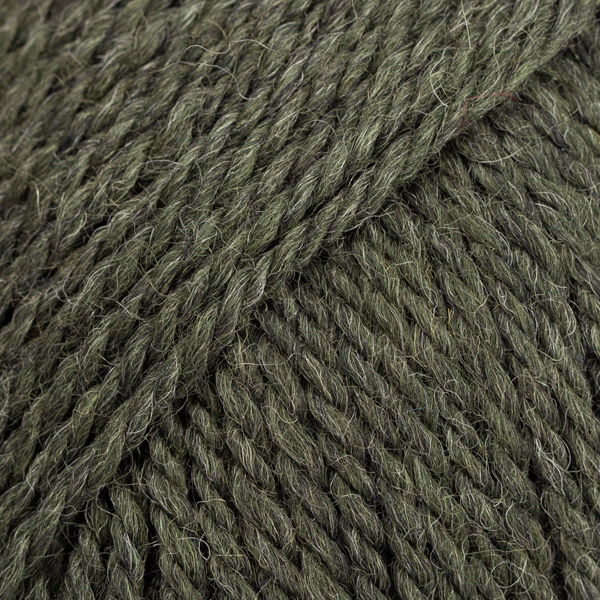

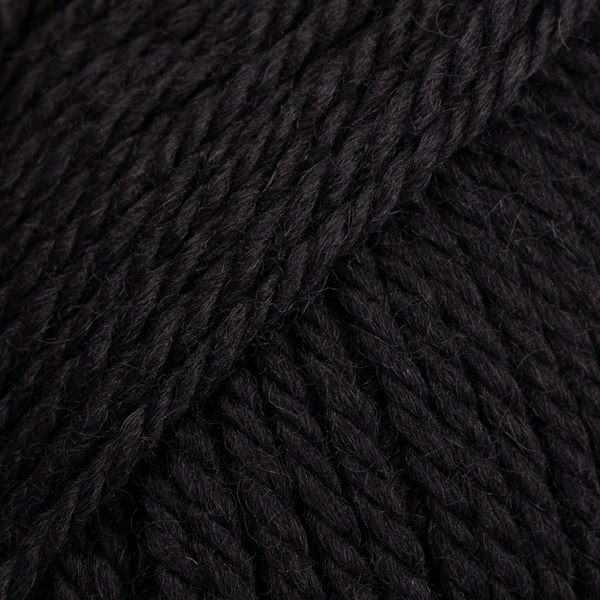





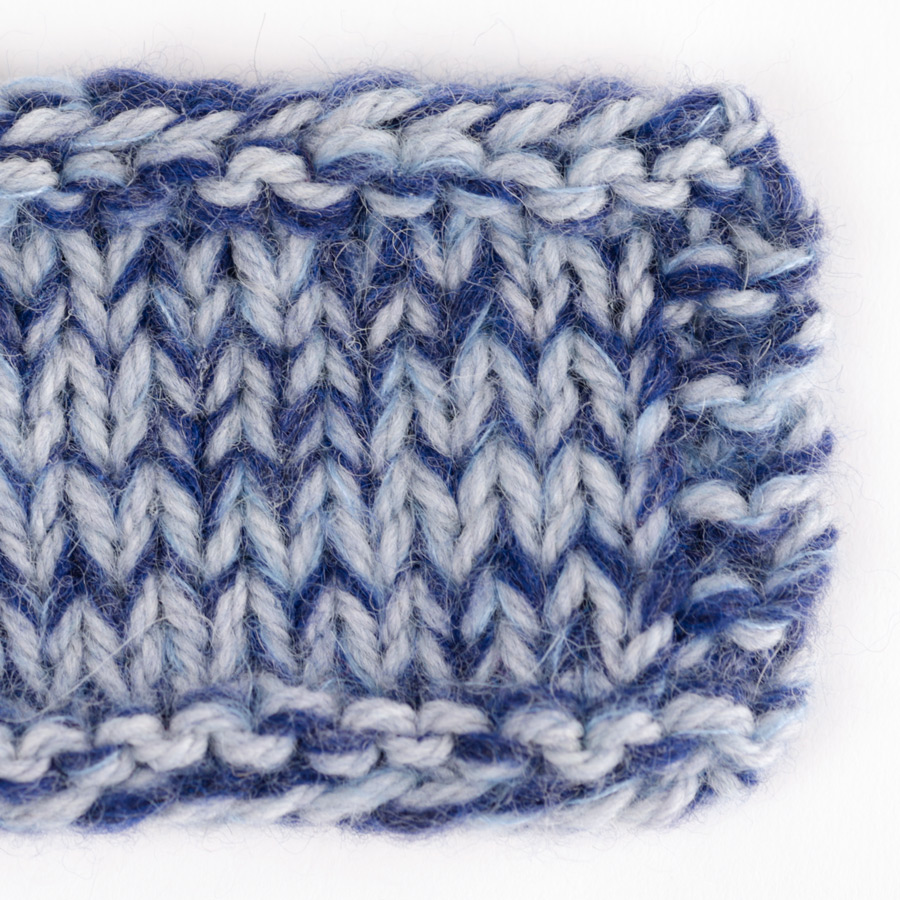
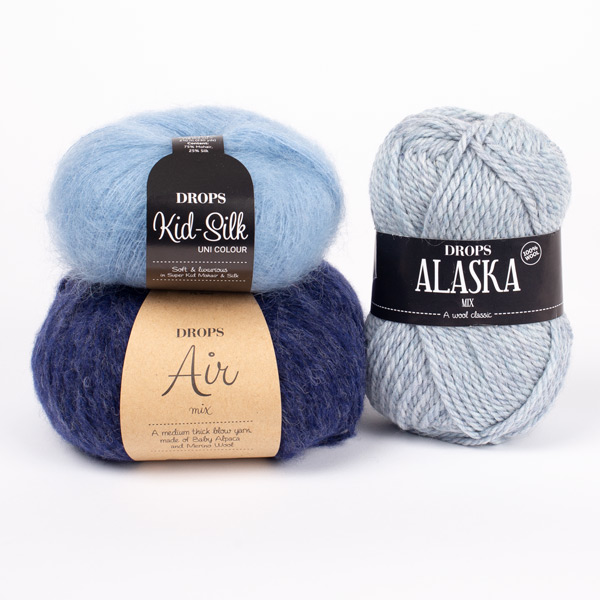
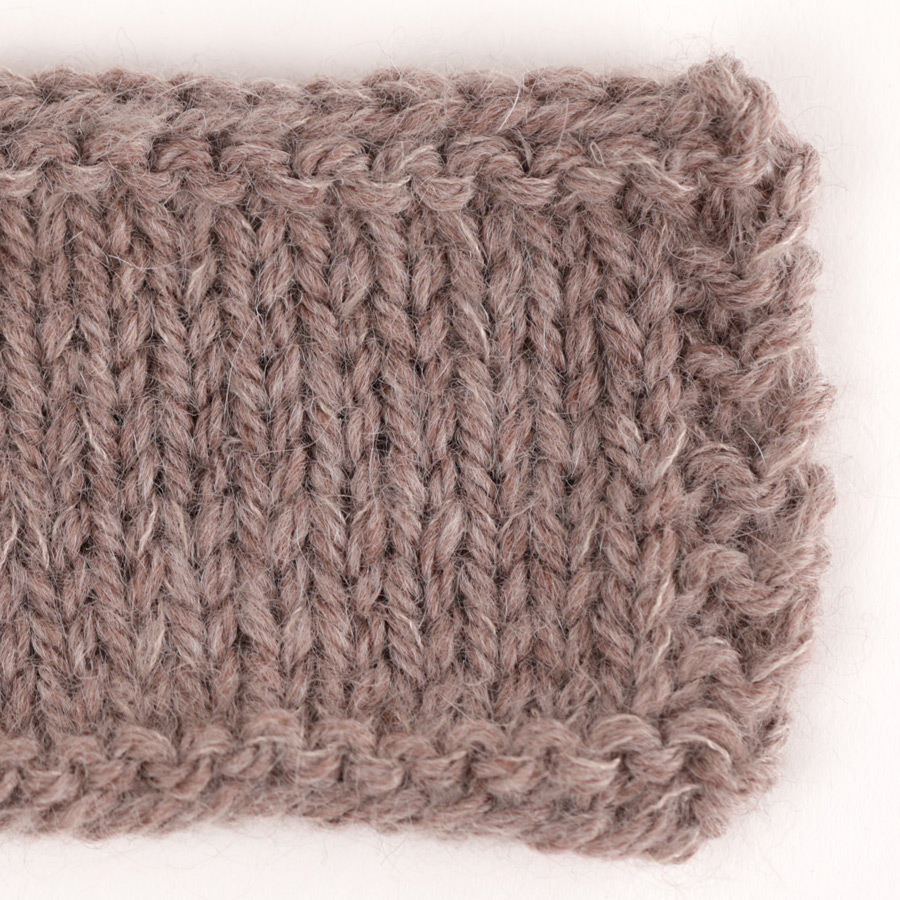
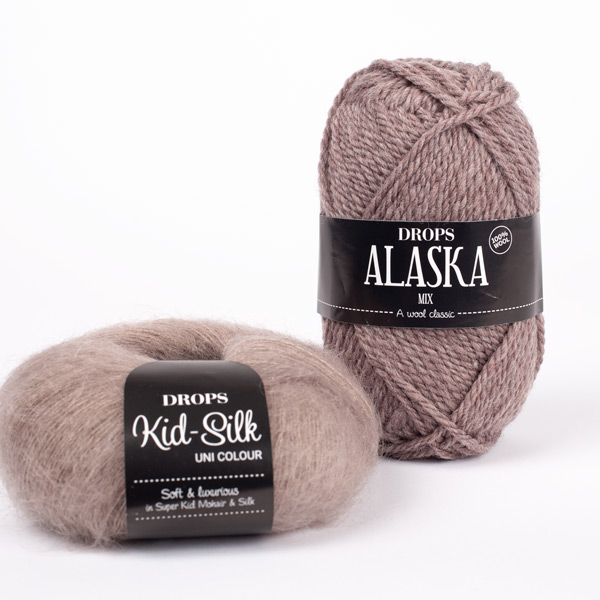
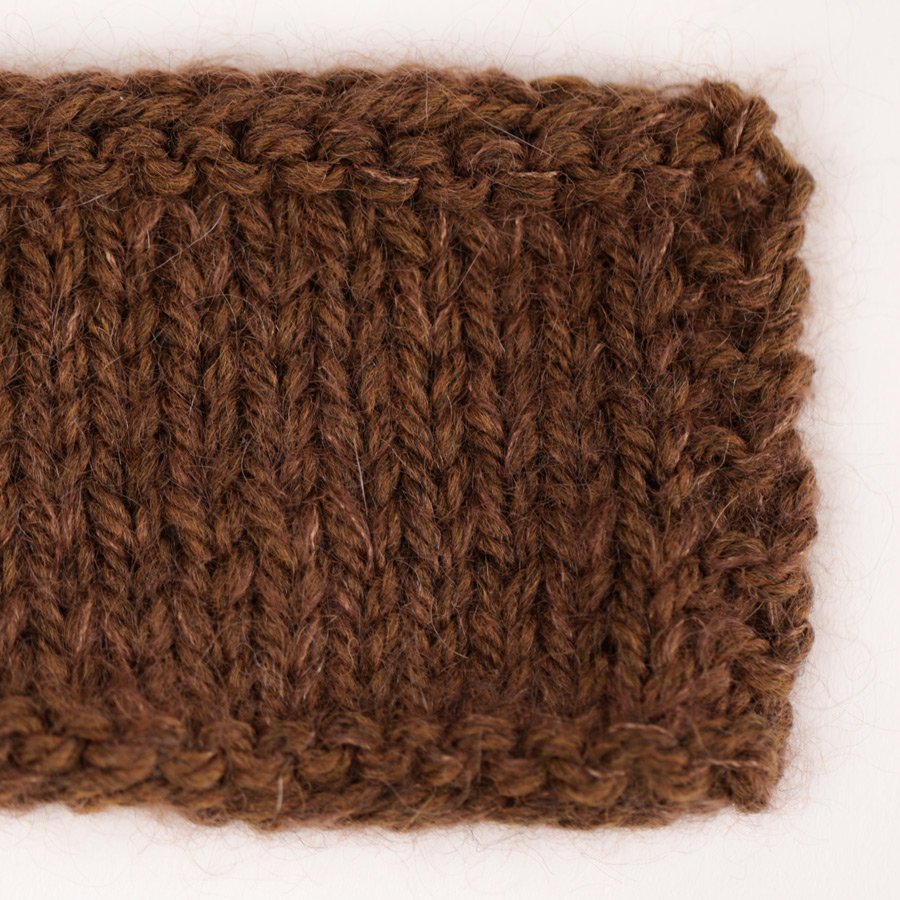
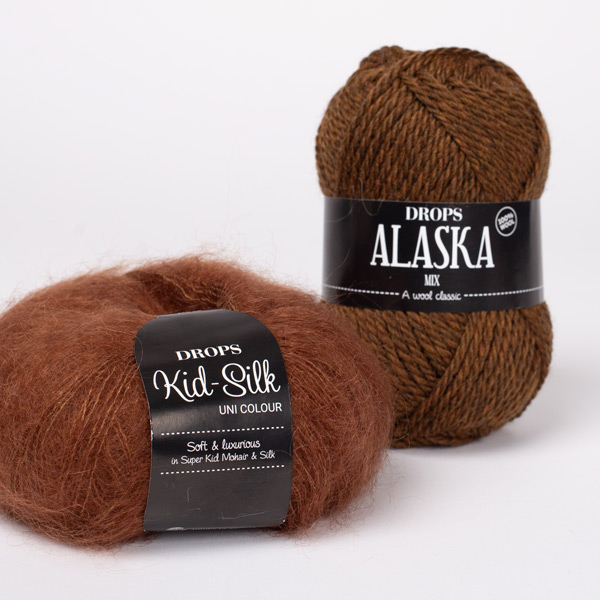















Kreeg een tip. Wanneer je breiwerk klaar is , deze eerst wassen voor het dragen. Heb dit gedaan en het vest vilt nauwelijks.
20.11.2015 - 08:26